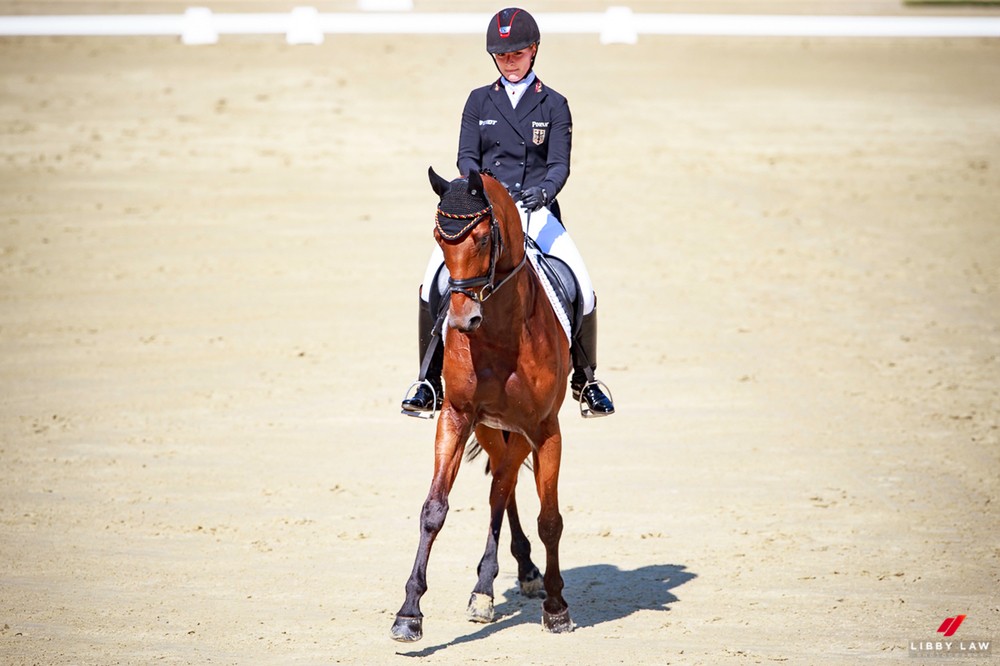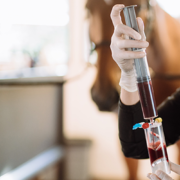The Golden System: How Germany Consistently Produces Top-Ranked Riders

By Emilie Ehrman
The equestrian industry has plenty to say about the German style of riding, and the country’s production of champions speaks for itself. After all, Germany holds the record for most wins in the Olympic equestrian discipline, boasting 25 gold medals (52 overall). How is it possible that this particular country systematically and consistently produces some of top riders in the world? From Ludger Beerbaum, to Michael Jung, to Isabell Werth – the Germans are doing something right.
A rider’s education in Germany is structured very differently than in the United States and Canada. Izzie Stehle has been riding for 15 years and moved to Germany to further develop her riding career. We got the opportunity to hear firsthand experiences and learn about the development of German riding professionals.
In Germany, young children who don’t come from an equestrian family usually begin at a riding school, where they start with lunge lessons and eventually progress to group lessons. According to Izzie, “Some schools let the students compete on the school horses in the very low levels. Many riders will then either go on to [get] their own horse, or lease horses for a while.”
The foundation of riding in Germany is centered around dressage. “We usually don’t start jumping until you can ride in all three gaits, have access to the brakes, and are somewhat capable of steering. Once that works, you can choose to start jumping. It’s not mandatory, but Germany loves its riding licenses and certificates, and the jumping discipline holds the majority. Having at least a few lessons is always good.”
According to Izzie, although students may come to the barn for lessons four times a week, they should not expect to jump four times a week. The foundation of riding is based upon flatwork, and adding obstacles to a building block without a foundation simply doesn’t work. Many highly certified German riders tend to pick only one emphasis, either jumping or dressage. However, many riders who do not become professionals continue to compete in both disciplines on a regular basis.

In Germany, most riders have regular lessons to develop their skills, then progress through the various class levels at unaffiliated shows, before moving onto high-level classes at affiliated shows. However, not everyone can compete at affiliated shows. In order to compete at an affiliated show, an individual must have previously earned a Reitabzeichen, or a German riding badge. The cost to earn such a badge is approximately 500€, or $568, with a school horse. The basic foundation of a Reitabzeichen includes dressage at ‘E’ level (preliminary in the UK), a jumping course at ‘E’ level (80-90 cm), and riding theory. An individual must earn a certain amount of points to qualify, and only then can she begin to compete in low-level classes, such as level E.
“If you want to take part in the next level higher, L, you need earn another Reitabzeichen. Here, you can choose to do the standard one, which is an ‘A’ dressage test (novice in the UK), an A jumping course (100-110 cm), and [riding] theory. Or, you can choose to specialize in either dressage or jumping. In that case, you would have to ride either a level L dressage (elementary in the UK) test or the same level jumping course at a height of 115-120 cm and take part in the theory. Once you have this Reitabzeichen, you can move up the levels by winning ribbons.”
Some German riders choose the Bereiter program, which Izzie describes as a long-term working student position with both written and ridden exams.
“You do a three year apprenticeship to become a Bereiter. Following that, you can do your ‘Master’ and qualify as a professional rider. You can additionally take the trainer licensing test, which costs between 500-700 € (less than $800) per course.”
Following the long training process, many riders decide to stay with their trainers, to gain experience and develop a client base before becoming an independent trainer.
With certification comes an industry standard, and the German system puts an emphasis on education by only allowing advancement when a specific level as been proven by the rider, which is much different than in the United States. The German riding system makes for a more standardized and graduated education for riders. While there are a variety of trainer or rider certifications in the United States and Canada, they are not mandatory or even necessarily popular. Perhaps this begs the question: if the United States should follow in the German approach to riding on the various circuits and if we did, would would we find ourselves watching a whole new level of sport?


